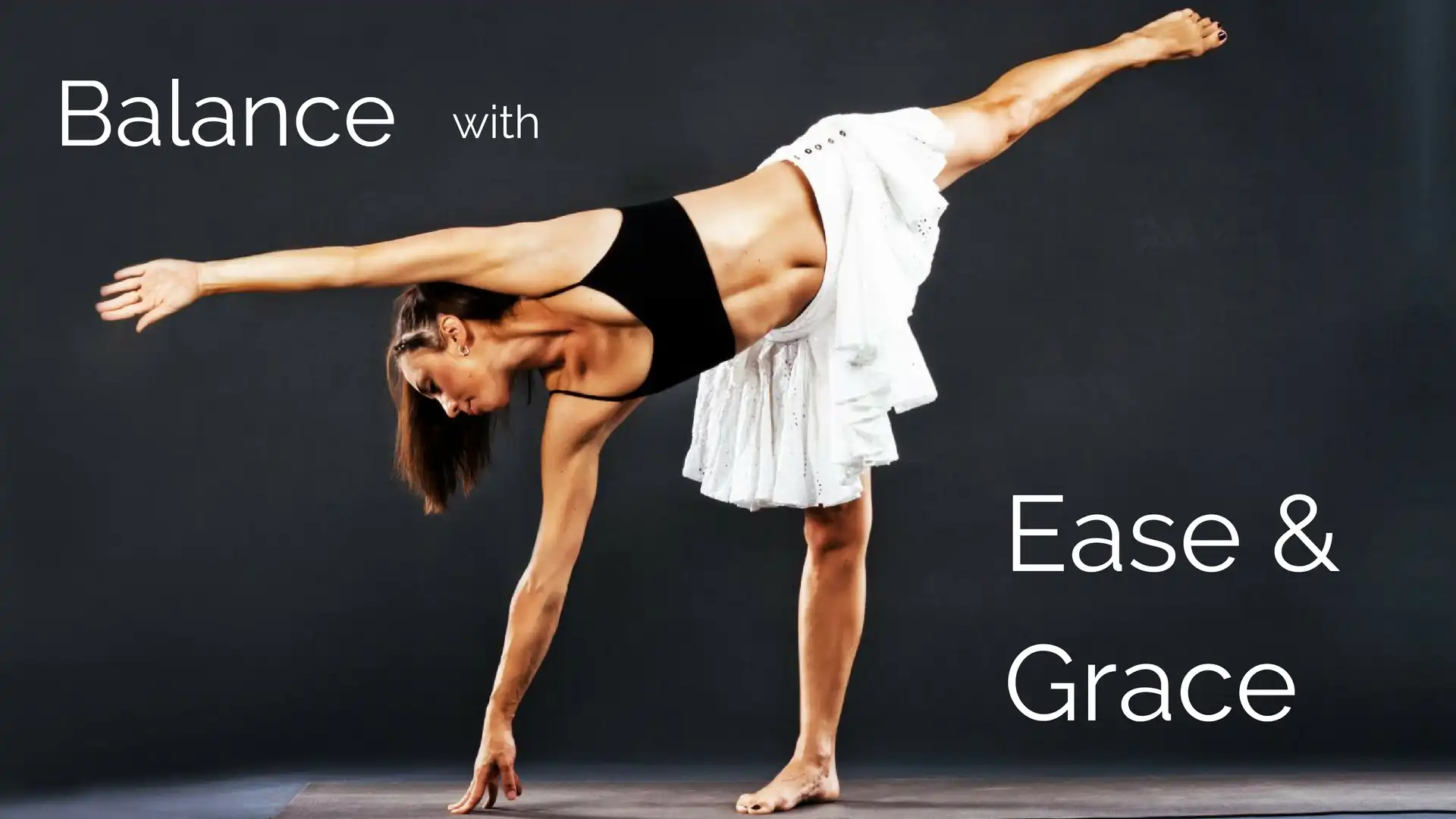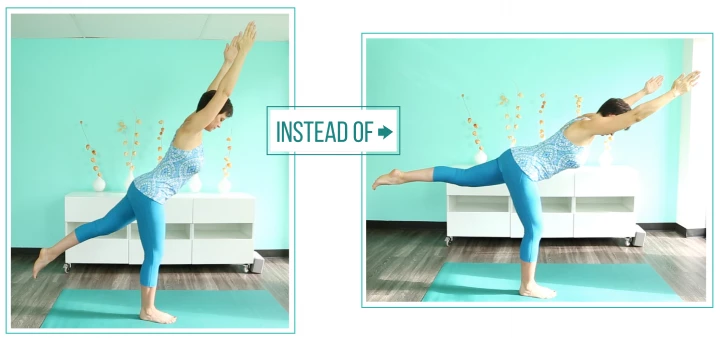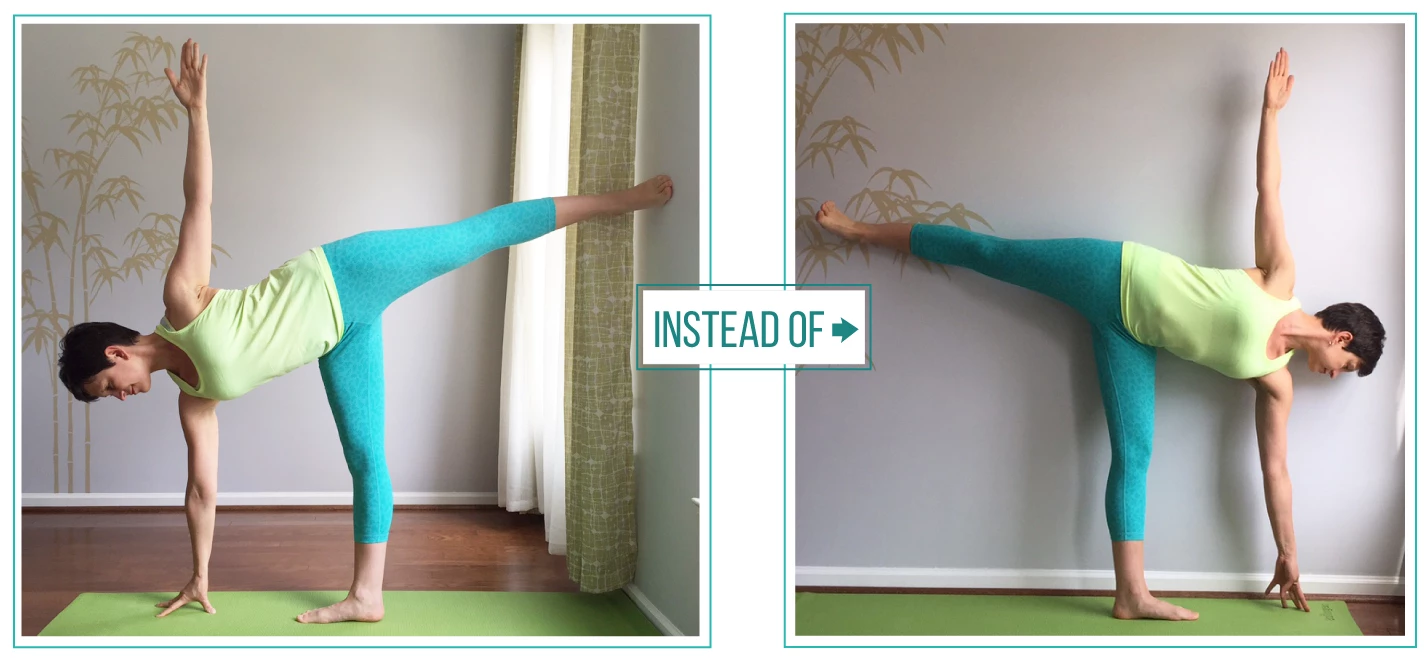7 Tips to Build a Rewarding Balance Practice in Yoga

A common concern among yoga practitioners is that their balance doesn’t seem to improve even if they incorporate balancing poses regularly. If that’s the case, we need to take a closer look at what you are doing in your yoga practice and daily life to see if you need a bit of course correction.
Here are 7 tips to enhance your balacing poses and build a rewarding balancing practice.
1. Do at Least a Couple of Balancing Poses Every Time You Practice Yoga
This is obvious: if we want to improve our balance, we must practice balancing. This particularly applies to gentle yoga-type practices. Sometimes, the teachers are so concerned about their older or less-capable students’ abilities that they spend most of the yoga practice close to the ground. But those are the same populations that benefit the most from balance training, so we need to make sure to include some simple balancing poses for them every time.
2. Hold Balance Poses Longer
Aim for at least 6 full deep breaths in each yoga pose and try to work it up to 10. This will give your body and brain a better chance of learning.
3. Pick Easier Yoga Poses

Pick easier poses so that you can actually focus on the balancing aspect of the pose instead of a bazillion other things that are required in more difficult ones. Tadasana is an excellent example. You can do so many things with the balancing versions of this one pose.
4. Simplify Difficult Asanas
Simplify difficult poses to make them more manageable. There is no need to attempt the most difficult version of the pose if it makes you fall out of it every time. Start with a modified adaptation and, over time, continue to move toward a more challenging version (if appropriate).

5. Choose Proper Yoga Pose Adaptations
I often see students leaning against the wall or other objects in their effort to tackle a yoga pose. The problem is that in leaning you are changing the weight distribution throughout your body, which doesn’t help  your body learn how to balance properly. Instead, try keeping your fingertips on the wall. Start with all of them, then see if you can do it with two fingers of each hand, then one finger, then none, while maintaining proper body alignment.
your body learn how to balance properly. Instead, try keeping your fingertips on the wall. Start with all of them, then see if you can do it with two fingers of each hand, then one finger, then none, while maintaining proper body alignment.
Quick note: Using the wall in your yoga practice is perfectly fine for supporting yourself in more challenging poses. But we usually do that to work on other aspects of the pose, not the balancing aspect. For example, doing Half Moon Pose with your back against the wall is perfectly acceptable if you are working on hip and leg strength, axial extension of the spine, etc., but it will not help you improve your balance. But if you do Half Moon Pose, barely touching your toes to the wall, then you will add the balance training element, as well. So, be mindful of how your pose modifications affect your balance training.

6. Train Your Dynamic Balance
It’s important to train your dynamic balance and not just static. Dynamic balance training is necessary to prepare our bodies and brains for the challenges of everyday living. So make sure you include dynamic elements in your balance training, such as moving in and out of the balance pose, moving within the balance pose, and moving between two or more balance poses.
7. Focus
Do your best to drop the inner talk that often arises when we do balance poses. Many emotions can come bubbling up to the surface, ranging from fear to frustration to disappointment. There are different strategies that we can employ here, but the simplest one is to focus on counting the length of your breath. Once you get into the pose, focus on inhaling for 6 seconds and exhaling for 6 seconds; next time, inhale for 7 seconds, exhale for 7 seconds, and so on. This gives our inner voice something to do rather than pointing out our balancing inadequacies.
These are some of the ideas that you can implement in your yoga practice to see whether they will positively impact your balance.
Also, read...
Restorative Yoga: A Sequence to Build and Maintain Resilience
Pranayama: Expand Your Life Energy
Nyasas: Turn Your Body into a Temple
Related courses

Educated as a school teacher, Olga Kabel has been teaching yoga for over 14 years. She completed multiple Yoga Teacher Training Programs but discovered the strongest connection to the Krishnamacharya/ T.K.V. Desikachar lineage. She had studied with Gary Kraftsow and American Viniyoga Institute (2004-2006) and received her Viniyoga Teacher diploma in July 2006, becoming an AVI-certified Yoga Therapist in April 2011. Olga is a founder and managing director of Sequence Wiz— a web-based yoga sequence builder that assists yoga teachers and yoga therapists in creating and organizing yoga practices. It also features simple, informational articles on how to sequence yoga practices for maximum effectiveness. Olga strongly believes in the healing power of this ancient discipline on every level: physical, psychological, and spiritual. She strives to make yoga practices accessible to students of any age, physical ability, and medical history, specializing in helping her students relieve muscle aches and pains, manage stress and anxiety, and develop mental focus.



